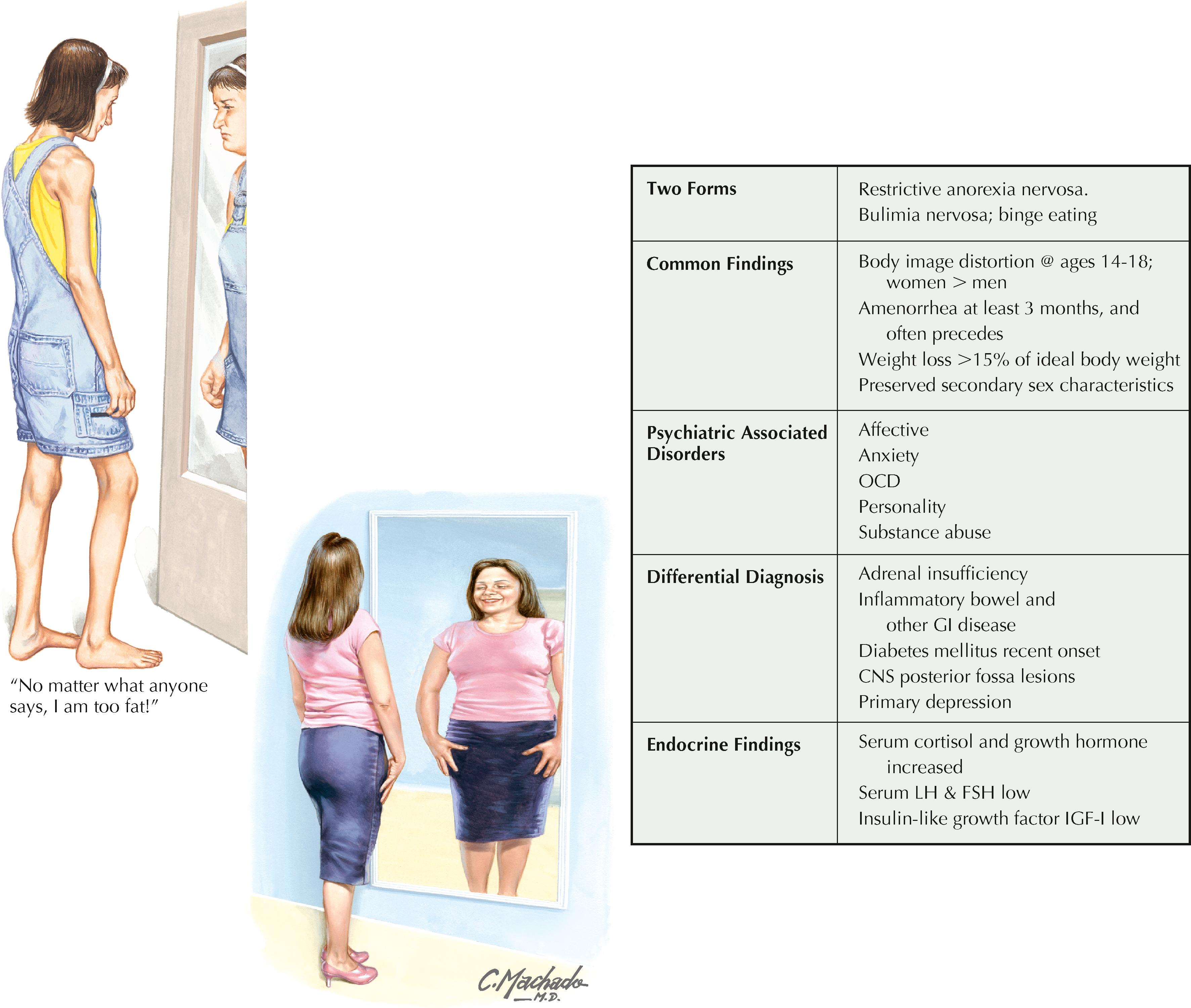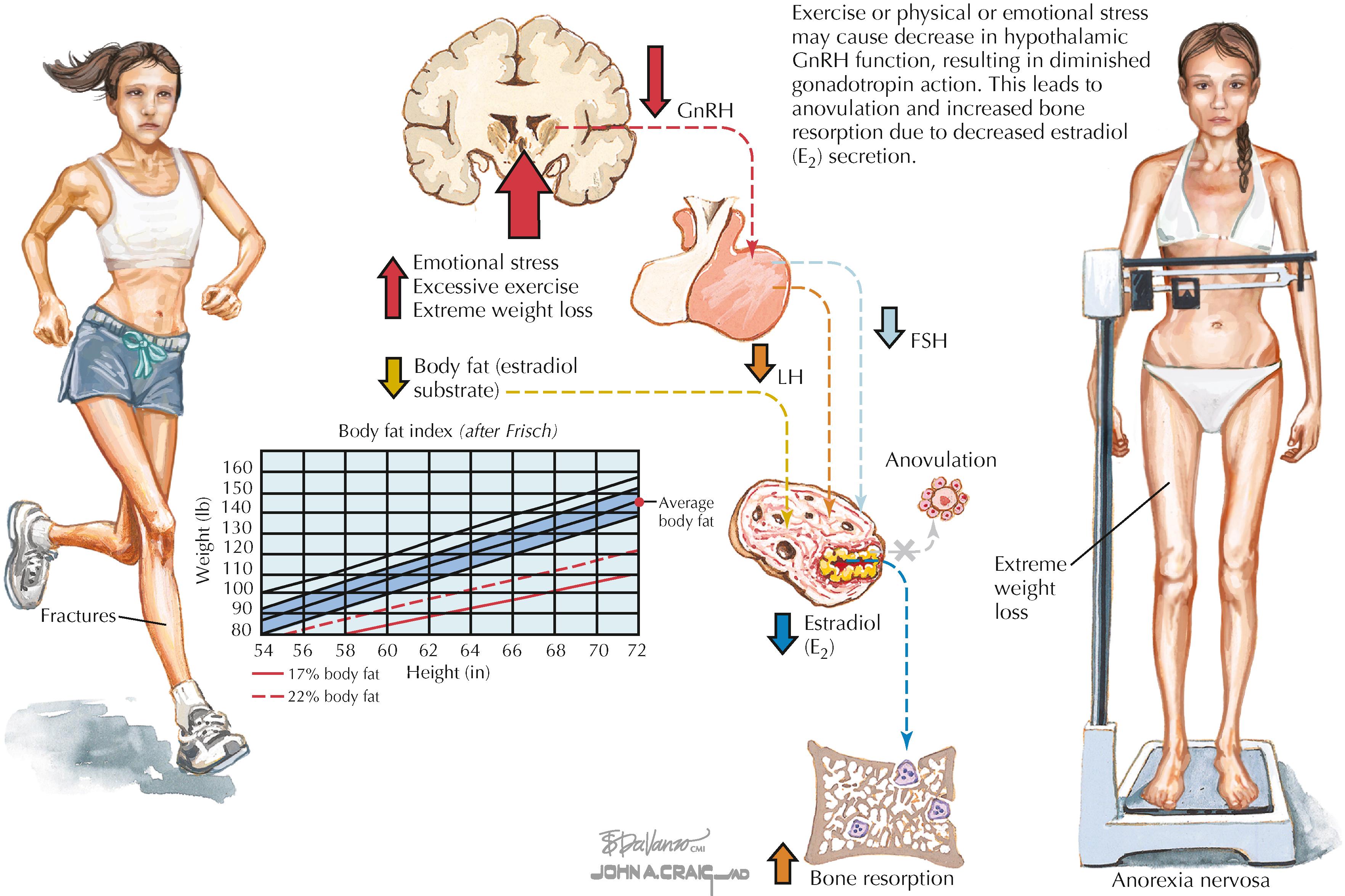Physical Address
304 North Cardinal St.
Dorchester Center, MA 02124
The American Psychiatric Association’s Diagnostic and Statistical Manual of Mental Disorders (DMS-V), updated in 2013, and the World Health Organization’s (WHO’s) International Statistical Classification of Diseases and Related Health Problems, updated in 2019, identifies and defines the following eating disorders (EDs): anorexia nervosa (AN), bulimia nervosa (BN), binge eating disorder (BED), other specified feeding or eating disorder (OSFED), unspecified feeding or eating disorder (UFED), and avoidant/restrictive food intake disorder (ARFID).
Disordered eating (DE) behaviors such as binging, purging, excessive exercise, calorie restriction, laxative, or diuretic use may be present without a formal diagnosis of ED.
EDs are thought to be the result of a combination of biologic, psychological, and social factors.
Male and female athletes are at higher risk for developing an ED than the general population.
Screening and early intervention of ED/DE are vital to reducing possible serious consequences.
Essential features and diagnostic criteria ( Fig. 27.1 ):
Restriction of calorie intake relative to requirements, leading to a significantly low body weight in the context of the age, sex, developmental trajectory, and physical health.
Intense, pathologic fear of gaining weight or becoming fat or persistent behavior that interferes with weight gain.
Individuals are often disturbed by their body weight or shape, their self-worth is influenced by body weight or shape, or there is a persistent lack of recognition of the seriousness of their low body weight.

The WHO uses a threshold of body mass index (BMI) less than 18.5 kg/m 2 in adults and BMI for age under fifth percentile in children and adolescents.
Severity of AN (based on BMI):
Mild: ≥17 kg/m 2
Moderate: 16–16.99 kg/m 2
Severe: 15–15.99 kg/m 2
Extreme: <15 kg/m 2
Emotional and behavioral characteristics: Intense fear of weight gain, preoccupation with weight/food, overvaluation of body image, inflexible thinking, limited social spontaneity, restrained emotion, strong need for control
Common comorbidities: Anxiety, depressive disorders, obsessive-compulsive disorders
Medical complications: due to malnutrition
Endocrine/metabolic ( Fig. 27.2 ):
A result of the body’s attempt to conserve energy for more vital processes.
Amenorrhea/anovulation/infertility: A decrease of pulsatile hypothalamic gonadotropin-releasing hormone secretion causes low levels of follicle-stimulating hormone (FSH) and luteinizing hormone (LH), known as functional hypothalamic amenorrhea (FHA).
Reduced testosterone in males (hypogonadotropic hypogonadism) can result in low libido and infertility.
Decreased leptin and oxytocin and increased ghrelin, protein YY, and adiponectin, which are appetite-regulating hormones.
Increased growth hormone.
Increased cortisol level because of increased adrenal production and reduced renal clearance.
Low insulin growth factor-1 (IGF-1).
Hypothermia.
Euthyroid sick syndrome: thyroid function abnormalities; resolves with weight gain.
Hypokalemia, hyponatremia, hypoglycemia.
Low bone density: The result of low estrogen; low testosterone; and increases in stress hormones, catecholamines, and cortisol. This results in reduction of bone formation and calcium absorption. Low energy availability leads to decreased IgF-1 and bone formation marker levels. There is also an increase in bone resorption. Changes in bone structure result in an increased risk of stress fractures. Fracture risk persists for years after diagnosis and may be irreversible.

Cardiovascular:
Hypotension.
Arrhythmias.
Sinus bradycardia (heightened vagal tone due to profound weight loss). Resting heart rate (RHR) is often seen below 60 beats per minute (bmp). If RHR is <40 bpm, hospitalization is often required.
Prolonged QTc: Increased risk of sudden death.
Heart block.
Endothelial dysfunction increasing cardiovascular risk.
Structural changes: Left ventricular atrophy, pericardial effusion.
Gastrointestinal: Elevated liver function tests, gastroesophageal reflux disease (GERD), bleeding, ulceration, dysphagia, gastroparesis leading to early satiety and bloating, constipation, dental/gingival issues.
Neurologic: Brain atrophy, memory loss, poor concentration, insomnia.
Integumentary: Lanugo, hair loss, acrocyanosis, carotenoderma, dry hair and nails, poor wound healing.
Hematologic: Anemia, leukopenia, thrombocytopenia.
Other: Increased injury risk and decreased athletic performance because of dehydration, reduced glycogen stores, or loss of muscle mass. Impaired cognition and mood can also negatively affect performance.
Recurrent episodes of binge eating: These episodes consist of eating significantly more food in a defined period (e.g., within 2 hours) than others would eat under the same circumstances
Episodes are marked by feeling out of control
Binge eating episodes are followed by inappropriate compensatory behaviors (purging, fasting, excessive exercise, inappropriate laxative, or diuretic use)
Must occur once weekly for 3 months
Self-evaluation is unjustifiably influenced by body and shape
Severity scale
Mild: 1–3 episodes of inappropriate compensatory behaviors per week
Moderate: 4–7 episodes per week
Severe: 8–13 episodes per week
Extreme: 14 or more episodes per week
Weight is often within normal range but may be overweight
Emotional and behavior characteristics: Uncomfortable eating around others, food rituals, hoarding food, fear of eating in public, disappearing after eating, withdrawing from friends and activities
Common comorbidities: Anxiety, depression, obsessive-compulsive disorder, self-injury, impulsivity, suicidal ideation, substance abuse
Become a Clinical Tree membership for Full access and enjoy Unlimited articles
If you are a member. Log in here